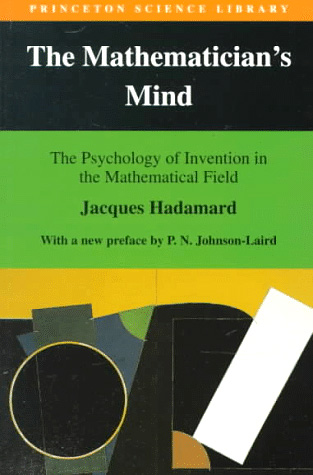Mozart on Creativity and the Ideation Process
by Maria Popova
“It is quite natural that people who really have something particular about them should be different from each other on the outside as well as on the inside.”
 In 1945, French mathematician Jacques Hadamard set out to explore how mathematicians invent ideas in what would become The Mathematician’s Mind: The Psychology of Invention in the Mathematical Field (public library) — an introspective inquiry into the process of discovery, using both his own experience and first-hand accounts by such celebrated scientists as Claude Lévi-Strauss and Albert Einstein. But what Hadamard uncovered in the process of writing his treatise were the general psychological pillars of all invention and the inner workings of the creative mind, whatever discipline it is applied to.
In 1945, French mathematician Jacques Hadamard set out to explore how mathematicians invent ideas in what would become The Mathematician’s Mind: The Psychology of Invention in the Mathematical Field (public library) — an introspective inquiry into the process of discovery, using both his own experience and first-hand accounts by such celebrated scientists as Claude Lévi-Strauss and Albert Einstein. But what Hadamard uncovered in the process of writing his treatise were the general psychological pillars of all invention and the inner workings of the creative mind, whatever discipline it is applied to.
In staging the scene of his investigation, Hadamard quotes a letter from Mozart in which the legendary composer — who had plunged into the creative life at a young age — details his ideation and editing process, touching on some of the most universal principles of the creative experience long before contemporary psychology demonstrated them.
Applying to the question of creativity the same passion with which he imbued his love letters, Mozart considers the origin of his ideas:
When I feel well and in a good humor, or when I am taking a drive or walking after a good meal, or in the night when I cannot sleep, thoughts crowd into my mind as easily as you could wish. Whence and how do they come? I do not know and I have nothing to do with it. Those which please me, I keep in my head and hum them; at least others have told me that I do so. Once I have my theme, another melody comes, linking itself to the first one, in accordance with the needs of the composition as a whole: the counterpoint, the part of each instrument, and all these melodic fragments at last produce the entire work.
More than two hundred years before poet Mark Strand would come to capture the electrifying flow of creative work and a century before Tchaikovsky would come to write of the “immeasurable bliss” of creativity, Mozart describes a similar experience:
Then my soul is on fire with inspiration, if however nothing occurs to distract my attention. The work grows; I keep expanding it, conceiving it more and more clearly until I have the entire composition finished in my head though it may be long… It does not come to me successively, with its various parts worked out in detail, as they will be later on, but it is in its entirety that my imagination lets me hear it.
Mozart then turns to the question of originality — a concept many creators have denounced as an illusion. (Most memorable of all denunciations is Mark Twain’s spectacular letter to Helen Keller, with Pete Seeger as a close second.) But for the great composer, originality — and thus the integrity of the creative impulse — is as indelible a part of our individuality as our fingerprints:
Now, how does it happen, that, while I am at work, my compositions assume the form or the style which characterize Mozart and are not like anybody else’s? Just as it happens that my nose is big and hooked, Mozart’s nose and not another man’s. I do not aim at originality and I should be much at a loss to describe my style. It is quite natural that people who really have something particular about them should be different from each other on the outside as well as on the inside.
Complement The Mathematician’s Mind with the similarly spirited The Art of Scientific Investigation, an exploration of the ideation process published more than a decade later that builds on Hadamard’s work to stretch the inquiry even further into the frontiers of the creative mind, then see pioneering psychologist Jerome Bruner on the six essential elements of creativity.

No comments:
Post a Comment